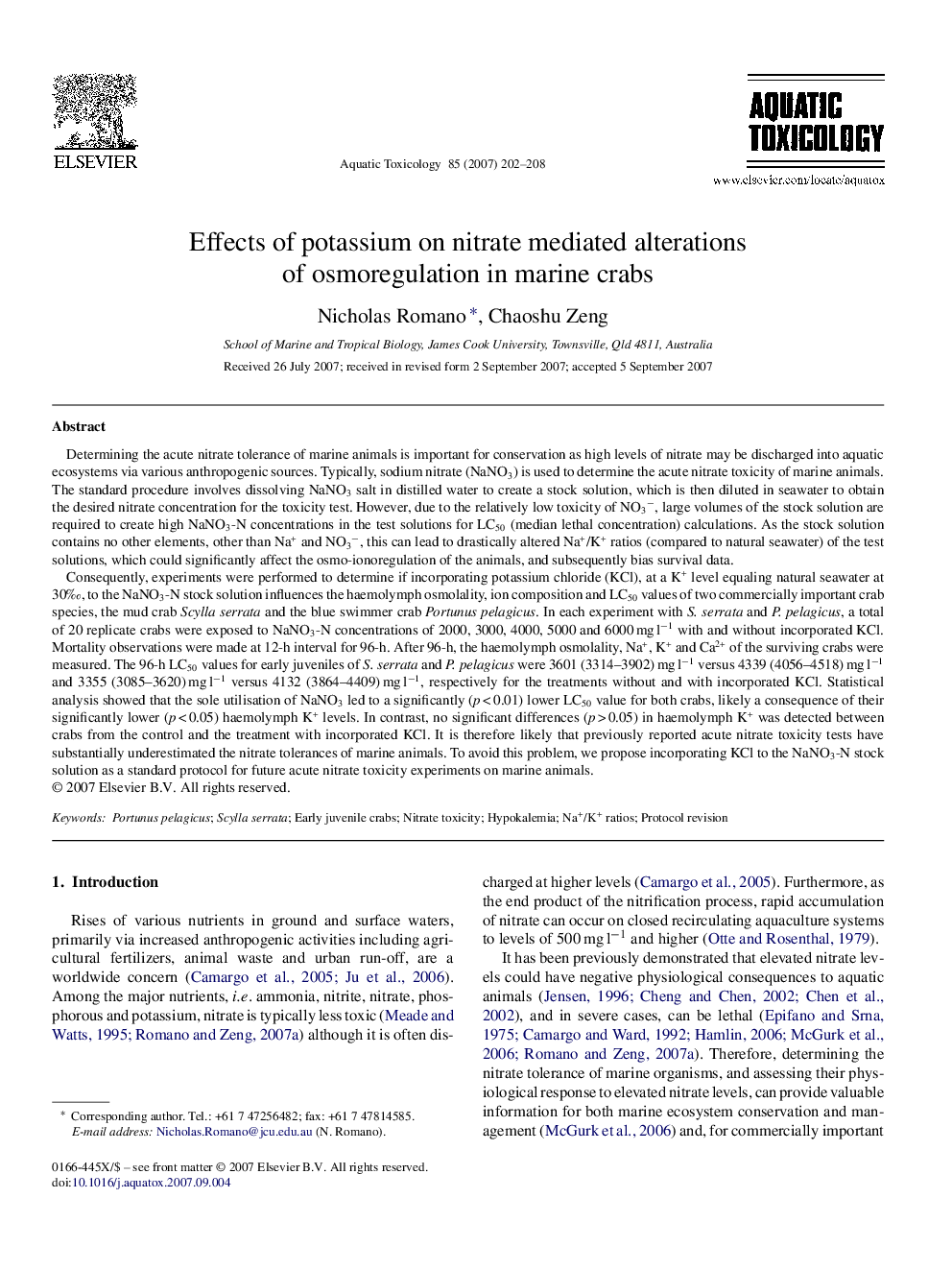| کد مقاله | کد نشریه | سال انتشار | مقاله انگلیسی | نسخه تمام متن |
|---|---|---|---|---|
| 4530957 | 1324742 | 2007 | 7 صفحه PDF | دانلود رایگان |

Determining the acute nitrate tolerance of marine animals is important for conservation as high levels of nitrate may be discharged into aquatic ecosystems via various anthropogenic sources. Typically, sodium nitrate (NaNO3) is used to determine the acute nitrate toxicity of marine animals. The standard procedure involves dissolving NaNO3 salt in distilled water to create a stock solution, which is then diluted in seawater to obtain the desired nitrate concentration for the toxicity test. However, due to the relatively low toxicity of NO3−, large volumes of the stock solution are required to create high NaNO3-N concentrations in the test solutions for LC50 (median lethal concentration) calculations. As the stock solution contains no other elements, other than Na+ and NO3−, this can lead to drastically altered Na+/K+ ratios (compared to natural seawater) of the test solutions, which could significantly affect the osmo-ionoregulation of the animals, and subsequently bias survival data.Consequently, experiments were performed to determine if incorporating potassium chloride (KCl), at a K+ level equaling natural seawater at 30‰, to the NaNO3-N stock solution influences the haemolymph osmolality, ion composition and LC50 values of two commercially important crab species, the mud crab Scylla serrata and the blue swimmer crab Portunus pelagicus. In each experiment with S. serrata and P. pelagicus, a total of 20 replicate crabs were exposed to NaNO3-N concentrations of 2000, 3000, 4000, 5000 and 6000 mg l−1 with and without incorporated KCl. Mortality observations were made at 12-h interval for 96-h. After 96-h, the haemolymph osmolality, Na+, K+ and Ca2+ of the surviving crabs were measured. The 96-h LC50 values for early juveniles of S. serrata and P. pelagicus were 3601 (3314–3902) mg l−1 versus 4339 (4056–4518) mg l−1 and 3355 (3085–3620) mg l−1 versus 4132 (3864–4409) mg l−1, respectively for the treatments without and with incorporated KCl. Statistical analysis showed that the sole utilisation of NaNO3 led to a significantly (p < 0.01) lower LC50 value for both crabs, likely a consequence of their significantly lower (p < 0.05) haemolymph K+ levels. In contrast, no significant differences (p > 0.05) in haemolymph K+ was detected between crabs from the control and the treatment with incorporated KCl. It is therefore likely that previously reported acute nitrate toxicity tests have substantially underestimated the nitrate tolerances of marine animals. To avoid this problem, we propose incorporating KCl to the NaNO3-N stock solution as a standard protocol for future acute nitrate toxicity experiments on marine animals.
Journal: Aquatic Toxicology - Volume 85, Issue 3, 15 December 2007, Pages 202–208